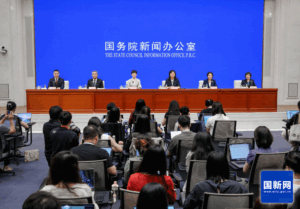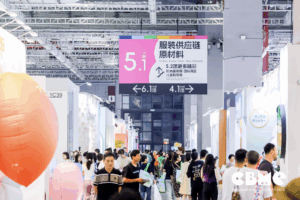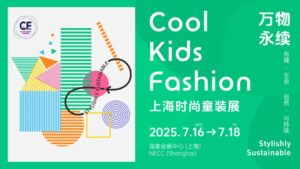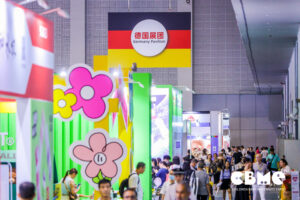Recently, iResearch released the “2024 China Maternal and Child Family Marketing Trend Insight Report”. The report mentions that under the trend of a gradually decreasing birth rate, the increase in average child-rearing investment has driven the maternal and child market consumption to maintain continuous growth. In 2023, the maternal and child market consumption reached 4 trillion, with an expected growth trend of about 7% in the future. The report analyzes the current consumption trends of the maternal and child family crowd from four stages which include pre-pregnancy preparation, pregnancy, parenting, and family consumption.
Below is the content of the report, organized by CBME Insight:
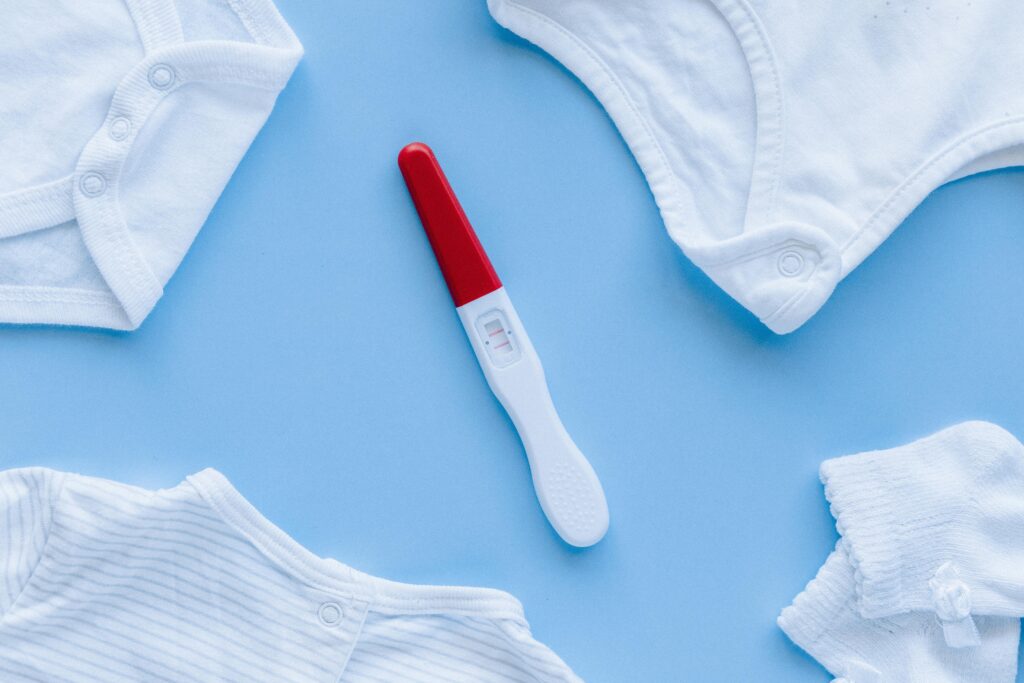
Pre-Pregnancy Stage
- The average monthly consumption expenditure increased by about 1,219 yuan during pre-pregnancy
Overall, the average monthly total consumption amount for families in the pre-pregnancy stage is about 1,219.2 yuan. Families with a serious attitude towards pre-pregnancy have higher requirements for the process and prepare more adequately, hence their family consumption expenditure due to pre-pregnancy will be significantly higher than those who leave it to chance. - Nutritional supplements receive great attention during pre-pregnancy, with an average monthly expenditure of about 626 yuan
During pre-pregnancy, necessary nutritional supplements become a consensus amongst the majority of families of childbearing age, with 98.3% of interviewees taking additional nutritional products. Those focusing on balanced and comprehensive supplementation and those targeting specific deficiencies account for half each.
In terms of nutritional product consumption, interviewees spend an average of 626.1 yuan per month, with post-millennials and millennials spending slightly more than families born in the ’90s, ’80s, and ’70s. - Vitamin and folic acid intake is prioritized in nutritional components
Families of childbearing age prioritize vitamins and folic acid in nutritional supplement intake. Additionally, post-millennials also focus on progesterone, DHA/EPA fish oil, and traditional Chinese medicinal supplements, while millennials favor donkey-hide gelatin/bird’s nest, PQO mitochondria, and NAC N-acetylcysteine.

Pregnancy Stage
- Increased monthly consumption during pregnancy is about 4,659 yuan
On the whole, the average monthly consumption generated by families during pregnancy is about 4,659 yuan. And as the pregnancy progresses, the average monthly consumption tends to increase gradually. - Nutritional supplementation is a focus during pregnancy, with an average monthly consumption of about 674 yuan
Nutrition is even more critical during pregnancy, with 98.7% of interviewees taking extra nutritional supplements. Those who focus on balanced and targeted supplementation each make up over 40%. Post-millennials lean towards a balance, while millennials focus more on supplementing specific deficiencies.
In terms of nutritional product expenditure, interviewees spend on average about 674.3 yuan per month, with millennials and late millennials spending slightly more.
- The focus on nutritional supplements during pregnancy is to boost immunity and fetal development, with calcium, vitamins, and folic acid as the primary components
The key demands for nutritional supplements during pregnancy include boosting immunity, assisting fetal development, and safe components.
Post-millennials aim for gentle absorption, while millennials focus on maintaining maternal intestinal function and preventing pregnancy-induced hypertension.
Calcium, vitamins, and folic acid are the primary components consumed by pregnant families. Post-millennials pay more attention to calcium supplementation, while millennials have a broader range of needs, focusing on intake of elements like DHA/EPA fish oil, donkey-hide gelatin/bird’s nest, and probiotics. - Most pregnant families plan to use third-party postnatal services
With heightened national health awareness, the concept of scientific postnatal care gains acceptance among more families. 70.5% of respondents mentioned the need for scientific guidance and methods for postnatal recovery, with millennials being particularly evident.
In plans for postnatal care, third-party services such as postnatal care centers, private hospitals, and postpartum care services are the main choices.
- The budget for postnatal services for expectant parents during pregnancy is about 42,000 yuan
The planned budget for third-party postnatal services by pregnant families is about 42,000 yuan in total, with the post-millennial and late millennials budgeting more for these services. When choosing a postnatal center, the primary considerations are the quality of maternal care services, including psychological guidance and nutritional meals. Millennials also value reputation, regular doctor visits, and an advantageous location.
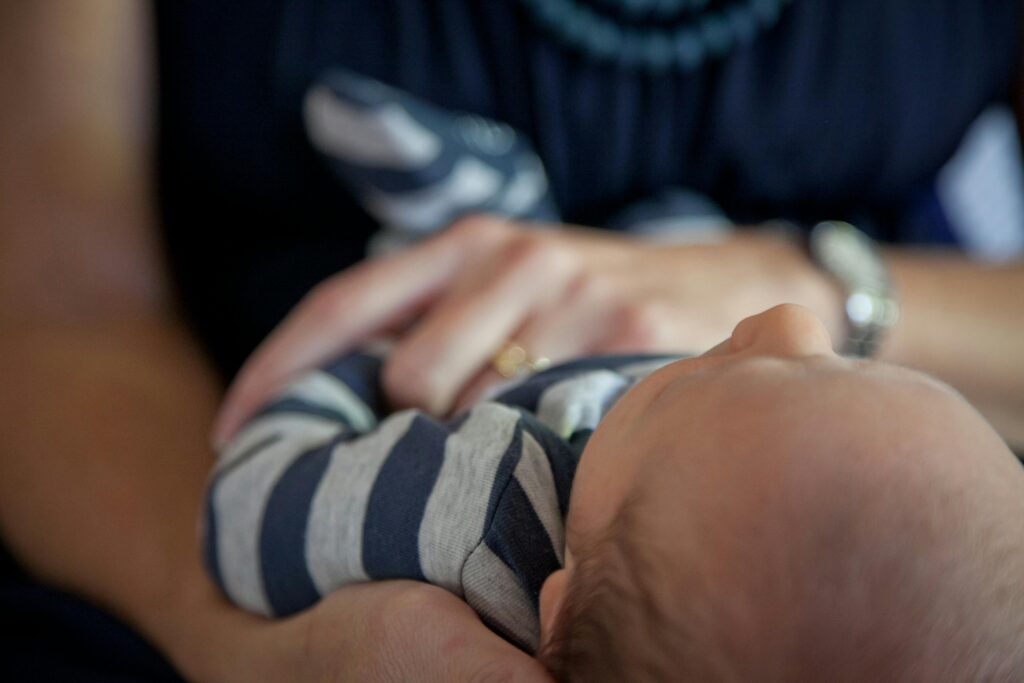
Parenting Stage
- Family parenting increases the average monthly consumption by about 5,400 yuan; formula milk, bathing products, and snacks/supplementary foods are essential for parenting consumption
On average, the total monthly consumption due to parenting is about 5,400.3 yuan.
Looking at the age of the children, families with infants aged 6 months to 1 year and 1 to 3 years spend slightly more due to parenting needs.
In the past three months, families have mainly purchased formula milk, bathing products, and snacks/supplements for parenting. It’s noteworthy that the new generation of parents’ feeding product needs extend beyond formula milk to meet the individualized nutritional demands of their children with more flexible, diverse, and customized nutritional products and supplements.
- For milk formula consumption, buying multiple cans at once is prevalent, with an average price of about 304 yuan per can
Most parenting moms and dads habitually buy multiple cans of formula at a time for their child’s daily feeding needs.
Overall, more than half of the parents buy 2-3 cans at a time, and post-millennial and millennial parents tend to buy 4-5 cans.
For formula milk expenditure, the average price per can is about 303.6 yuan, with post-millennial and millennial parents spending slightly more per can.
- Families with young children pay more attention to nutritional provision in milk formula consumption and generally prefer regular formula milk for daily purchases.
Young children’s families demand nutrient-rich formula milk that suits their baby’s constitution and provides quality assurance.
When selecting formula milk, based on the main focus of consumption, families still tend to buy regular formula milk that offers better universality and safety. Post-millennial households have a more diverse choice, also favoring goat milk formula, hydrolyzed formula, and soy protein milk.
- Most young families are aware of and willing to accept formula milk with new ingredients sold on the market
Overall, 88.6% of families of childbearing age are aware of the new ingredient formula milk currently available, and 93.7% are willing to accept formula containing new ingredients.
Among those who are “very aware” and “very accepting,” post-millennial families are more likely to understand and accept new ingredient milk powders.
Among infant formula ingredients, gastrointestinal care “probiotics,” brain development “DHA,” and immune boosting “lactoferrin” are relatively hotter in the market.
- The average price for a single diaper purchased by parenting families is about 2.5 yuan; when choosing, they focus on material, breathability, and absorbency
For diaper spending, the average price per diaper is about 2.5 yuan, with post-millennial and millennial families spending slightly more on average. Good material, breathability, and strong absorbency are the three main factors for young families when selecting baby diapers.
Additionally, post-millennial families, when choosing infant diapers, are also more concerned with quality and safety.
- In the past three months, the cumulative consumption of infant bathing products by parenting families is about 335 yuan
In the past three months, the cumulative expenditure on infant bathing products by parenting families has been approximately 335.2 yuan, with post-millennial and millennial households willing to invest more in their children’s bathing products for better care, especially noticeable in post-millennial families.
After the lifting of post-epidemic prevention and control measures, demand for parent-child travel has been gradually released, and compared to 2023, 60.9% of parenting families report an increase in family trips. The need for personal hygiene protection during family outings is expected to have a positive impact on the consumption of infant bathing products.
- In the consumption of infant bathing products,
Greater emphasis is placed on quality, safety, and gentle, non-irritating functional characteristics
Quality, safety, fragrance/preservative-free, and baby-friendly are the main factors for young families when choosing infant bathing products. Additionally, post-millennial families care more about brand reputation, age segmentation, and brand locality and origin, while millennial families pay more attention to the aesthetics and appeal of product packaging.
In terms of infant bathing product functions, gentleness and non-irritation are the primary concerns, followed by moisturizing properties. Post-millennial families also pay more attention to anti-inflammatory and anti-allergenic effects.
- The single-time consumption of snacks and supplementary foods by parenting families is about 124 yuan,
Mostly focusing on the proportion of nutritional components during purchases.
The one-time expenditure for snacks and supplementary foods for children by parenting families is on average about 123.7 yuan, with post-millennial families spending slightly more on a single occasion. Parenting families mainly focus on a reasonable proportion of nutritional components, scientific nutrition ratio, and high digestibility and absorption when choosing snacks and supplements.
In addition, post-2000s families pay more attention to non-baked/non-heating properties and to high-grade raw materials selected globally, while post-1995 families care more about a variety of flavors/types in combination packages, as well as gluten and nut allergen-free options.
- Parenting families show high interest and acceptance levels for AI-assisted parenting. Overall, 85.3% of parenting families are focused on AI-assisted parenting, and 93.1% of them are also willing to accept it. Furthermore, post-2000s families, which show higher proportions of “very interested” and “very accepting” attitudes, are relatively more attentive and receptive to this new method of parenting assistance with AI.
The primary application scenarios for AI-assisted parenting that families look forward to are storytelling, chatting with the child, answering the child’s questions, and daily monitoring and caregiving. In addition, post-2000s families have higher expectations for AI’s ability to predict child development and manage children’s temper tantrums, while post-1995 families are more excited about AI’s potential in predicting the child’s physical features.

Family Consumption
- The average monthly income of families with maternal and infant members is above 20,000 yuan, with 58% of the families’ average monthly expenditures being online.
The families of childbearing age participating in the survey have an average monthly income of about 23,000 yuan. The average family monthly spending is about 45.8% of the total average monthly income, which indicates a relatively healthy economic condition for these families overall. The main proportion of their expenses, 58%, occurs through online consumption. - Maternal and child households value product details and brand reputation when shopping, resulting in significant spending on personal care products besides child-rearing expenses.
When it comes to daily shopping, childbearing age families typically focus on product details and high-quality brands, often researching parameters, ingredients, and effects in detail and are willing to spend more on premium brands. Post-2000s families have a higher preference for spending on quality brands and products with stylish and distinctive designs, whereas post-1995 families are more inclined to purchase niche brands.
Besides child-rearing expenses, the most recent expenditures of childbearing age families have been primarily on personal care products, followed by cosmetics and skincare, apparel and footwear, transportation, and nutritional supplements, with post-1995 families also spending more on pet products.
- The average monthly expenditure on cosmetics and skincare by maternal and child families is about 2,159 yuan, focusing mainly on mild effects and non-irritation.
The average monthly total expenditure of childbearing age families on beauty and skincare is about 2,159 yuan, with post-1995 and late 1980s families tending to spend slightly more.
When choosing beauty and skincare products, families of childbearing age mainly focus on products that are mild and non-irritating, followed by ingredient safety and natural, additive-free products, with particular attention from post-2000s families. Additionally, post-2000s also pay more attention to product texture, whereas post-1995s focus on product packaging/appearance.
Most childbearing age families switch their cosmetics and skincare products before and after becoming pregnant or attempting to conceive, with 46.8% even choosing to switch entirely. However, post-1995s and post-2000s are more likely to replace only those products unsuitable for pregnant women.
- The maternal and child household cosmetics expenditures are predominantly on face foundations, while skincare expenditures are mainly on toners and facial waters.
In the past three months, the primary categories of makeup consumption by childbearing age families have been face foundation and face sculpting products, with post-2000s focusing more on face foundation. Skincare expenditures have mainly been on toners, cleansers, lotions, creams, and essences, with post-2000s again focusing their spending more on these categories. - Maternal and child households spend an average of about 126 yuan per month on personal care products, with a focus on ingredient composition during purchases.
Excluding child-rearing related expenditures, the cumulative personal care products spending over the last three months for childbearing age families is 377.2 yuan, or about 125.7 yuan per month on average, with post-1995 families spending slightly more.
When purchasing personal care items, childbearing age families primarily focus on ingredient safety and natural properties, while post-2000s families have stricter criteria, paying more attention to natural ingredients, positive brand reviews, suitability for pregnant women, and brand reputation.
- The average monthly expenditure on nutritional supplements for maternal and child households is about 513 yuan, with a major focus on ingredient safety when making purchases.
In addition to child-rearing related expenses, families of childbearing age spend about 512.9 yuan monthly on nutritional supplements, with post-2000s and post-1995s households spending slightly more.
When purchasing nutritional supplements, these households pay attention mainly to ingredient safety, followed by quality, functionality/effectiveness; post-2000s families are more concerned with product quality, suitability for specific demographics, and brand reputation, while post-1995 families place more weight on the product’s reputation.
- The consumption of nutritional supplements by maternal and child households primarily targets enhancing their own immune health.
In purchasing nutritional supplements, the core functional demand of childbearing age families is to strengthen their own immunity, with additional concerns including improving sleep, gastrointestinal care, and beauty maintenance also mentioned by many families.
Focusing on post-2000s and post-1995s, the former’s health care demands are more concentrated on beauty maintenance and bone health, while the latter’s concerns are more prominent in liver care and antioxidant support.
Keywords:
1. Wholesale pregnancy-safe beauty products

